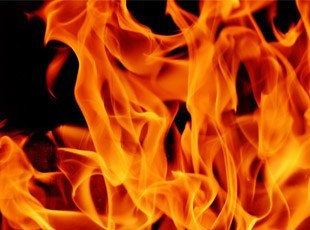Created to answer one of the most serious hazards to workers—especially those in the electric power generation industry—flame resistant (FR) clothing is personal protective equipment (PPE) to be provided at no cost to employees who come at risk of exposure to flames or electric arcs.
What Standards Cover Use of FR Clothing?
From the overarching General Duty Clause to specific FR clothing related documents, employers are required to understand and comply with the following standards:
The General Duty Clause, requires employers to:
“…furnish to each of his employees employment and a place of employment which are free from recognized hazards that are causing or are likely to cause death or serious physical harm to his employees.”
OSHA’s 29 CFR1910.269 states:
“The employer shall ensure that each employee who is exposed to the hazards of flames or electric arcs does not wear clothing that, when exposed to flames or electric arcs, could increase the extent of injury that would be sustained by the employee. This apparel standard applies to all apparel worn by an employee exposed to the hazards of flames or electric arcs.”
OSHA’s 1910.132 ruling states:
“Except as provided by paragraphs (h)(2) through (h)(6) of this section, the protective equipment, including personal protective equipment (PPE), used to comply with this part, shall be provided by the employer at no cost to employees. ”
Additional standards to be met include ASTM and NFPA standards, highlighted in a recent EHS Today Article.
What Conditions Beckon use of FR Clothing?
When OSHA published revisions to 29 CFR 1910.269 and 1926 Subpart V, related to the construction and repair of electric power generation, transmission and distribution in April 2014, the following conditions were highlighted for use of FR clothing by Tyndale:
Employers shall ensure that the outer layer of clothing worn by an employee, except for certain head, hands and feet items, is flame resistant under any of the following conditions:
- The employee is exposed to contact with energized circuit parts operating at more than 600 volts;
- An electric arc could ignite flammable material in the work area that, in turn, could ignite the employee’s clothing;
- Molten metal or electric arcs from faulted conductors in the work area could ignite the employee’s clothing, or
- The incident heat energy estimate exceeds 2.0 cal/cm2 (p. 390).
FR Clothing as PPE
A main portion of the updates was the shift from ‘FR should do no harm” to “FR clothing is personal protective equipment.”
The new rule states, “OSHA believes that it is reasonable and appropriate to treat FR and arc-rated clothing required under final paragraph (g) as PPE (p. 182).”
What Defines Appropriate FR Clothing?
According to the OSHA eTools, Clothing made from 100% cotton or wool may be acceptable if its weight is appropriate for the flame and electric arc conditions to which a worker could be exposed. As heat levels increase, these materials will not melt, but they can ignite and continue to burn.
The amount of heat required to ignite these materials is dependent upon a number of factors, including the weight, texture, weave, and color of the material.
This type of clothing does not comply with the “269” standard if it can ignite (and continue to burn) under the electric arc and flame exposure conditions found at the workplace. If they do not choose FR clothing, employers need to make a determination of whether or not the clothing worn by the worker is acceptable under the conditions to which he or she could be exposed. FR clothing is acceptable with respect to the OSHA apparel requirements.
Who Washes FR Clothing?
Highlighted by an interpretation letter and following OSHA Law Blog article, OSHA regulations 29 CFR 1926.95(a), the section states that protective equipment “shall be provided, used, and maintained in a sanitary and reliable condition” but does not elaborate on how this should be achieved.
This could mean that either the employer is responsible for the cleaning, or this could be achieved through home laundering. However, the employer is responsible for making sure that laundering does not compromise the protective properties of the clothing.
According to the letter,
“If employers rely on home laundering of the clothing, they must train their employees in proper laundering procedures and techniques, and employers must inspect the clothing on a regular basis to ensure that it is not in need of repair or replacement. If an employer cannot meet these conditions, then the employer is responsible for laundering the FR and arc-rated clothing.”
Practically speaking, home laundering is a risky proposition. If an employer is unwilling or unable to comply with the requirements for home laundering, then the employer is responsible for laundering the FR and arc-rated clothing.
Additional Information for Employers
Knowing the risks and tactics to minimize these risks is important for employers and more important for employees. Learn more from the following resources:
- FR Clothing OSHA E-Tool
- Electric Power Generation, Transmission, and Distribution Maintenance and Construction (29 CFR 1910.269 and 29 CFR Part 1926, Subpart V) Frequently Asked Questions (FAQs)
- Safety and Health Topics: Fire Safety
- 29 CFR 1910.269
- Flame Resistant Clothing April 2015 Memorandum
- Flame Resistant Specification Considerations
Developing a complete safety management system is the most effective way to protect your employees, recognizing the gains in productivity, profitability, and engagement that come with safety. Learn more by signing up for the Optimum Safety Management E-Newsletter, and contact us to learn more.








